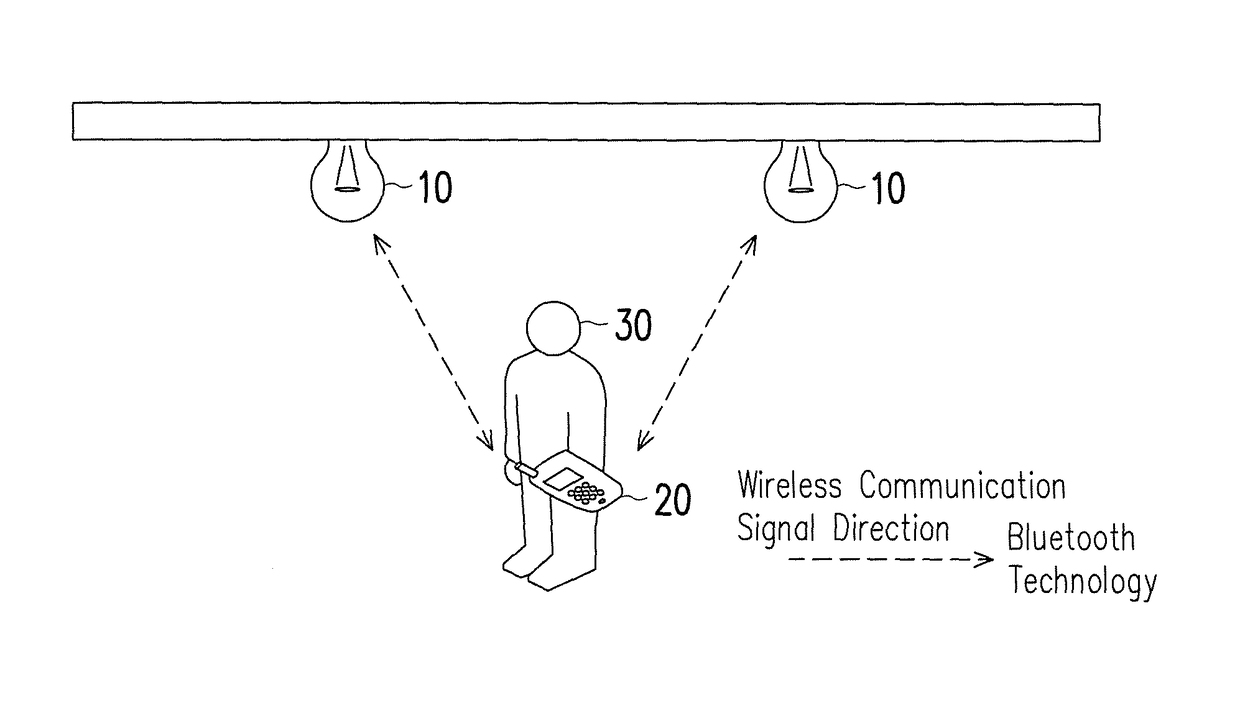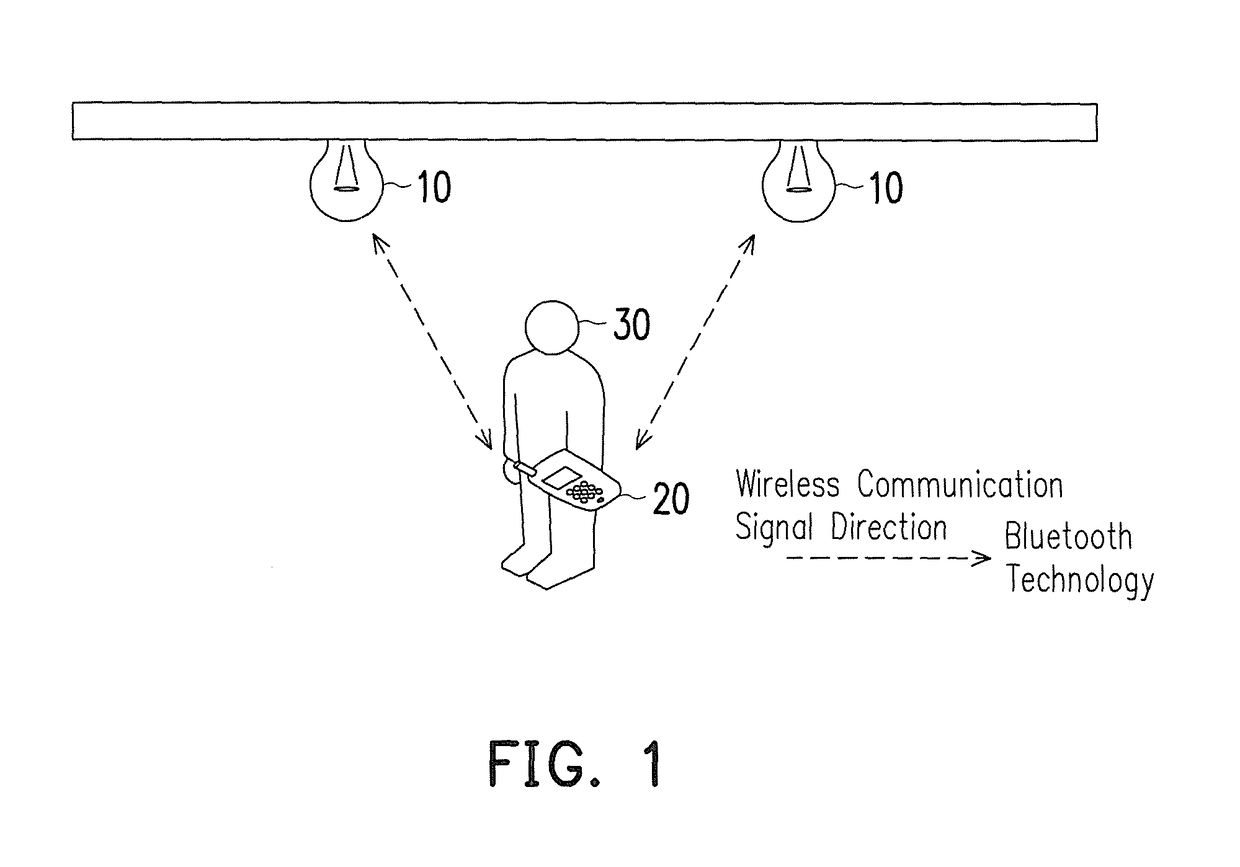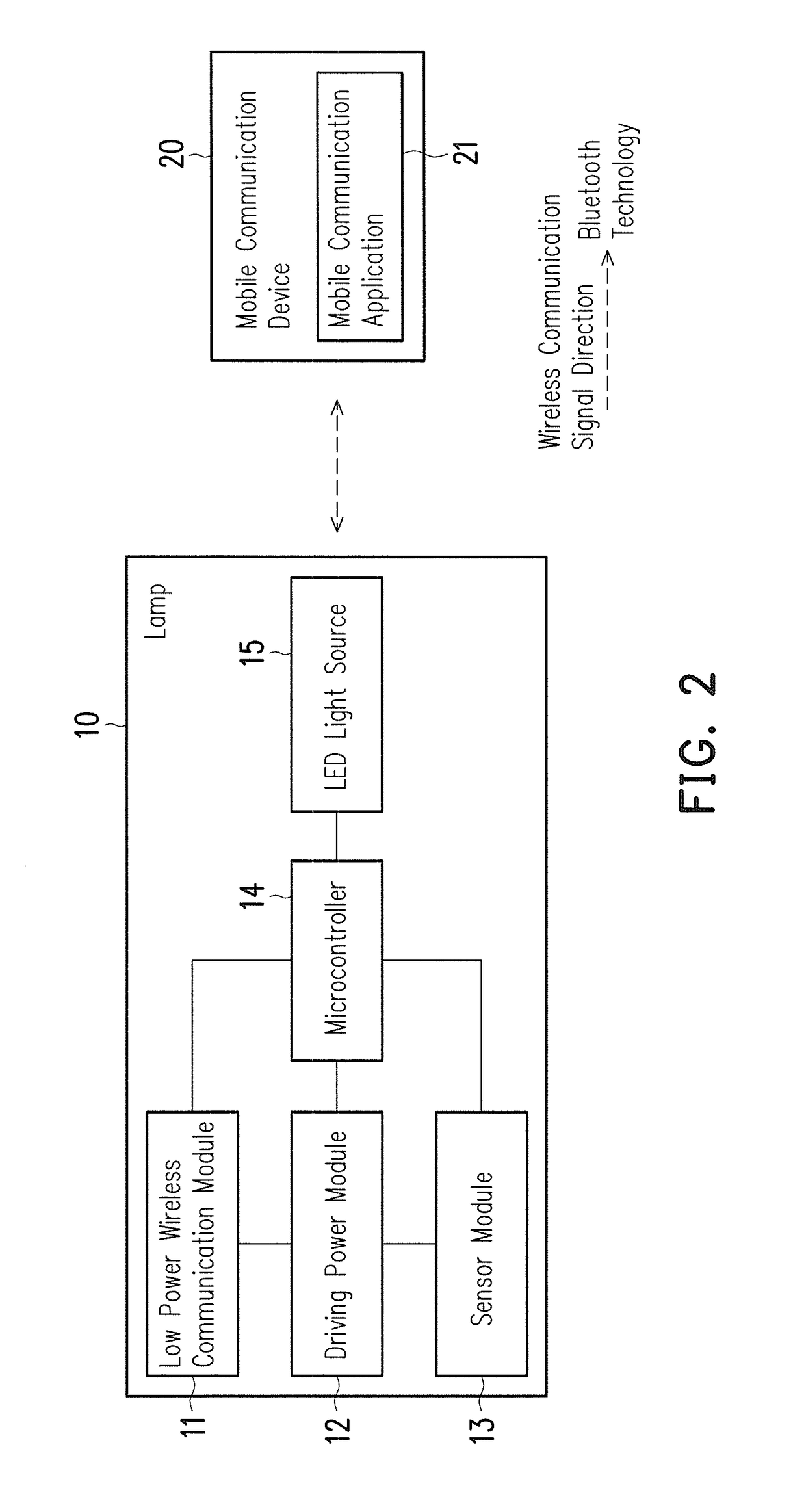Illumination control system
a control system and a technology for gps, applied in the direction of photometry using reference value, electric lighting sources, electric light sources, etc., can solve the problems of inability to use gps function indoors, people may easily get lost in shopping malls and lose their ways,
- Summary
- Abstract
- Description
- Claims
- Application Information
AI Technical Summary
Benefits of technology
Problems solved by technology
Method used
Image
Examples
embodiment 1
[0069]FIG. 11 is a sample figure illustrating an indoor lighting configuration of the illumination control system of the invention. First, a command may be directly transmitted from a personal cellular phone to the lamp 10 in a bedroom, such as the lamp 10 in the bedroom which may be configured for having a function of a vacancy sensor. The lamp is not turned on automatically when people come in and out during your sleep. A method for turning on the lamp 10 is through a cellular phone or a bracelet, or through a cellular phone or a bracelet with a voice command. Sufficient lighting is maintained in children room so children would not be afraid. A function of occupancy sensor may be set for an entrance where no one stays to turn the lamp on when presence of the user is detected and to turn the lamp off when the user leaves. The lamp having a function of a daylight sensor may be set up for places with many windows, such as a living room, a balcony and a yard, and light adjusting will ...
embodiment 2
or Remotely Turning Lights on and Off
[0083]FIG. 14 illustrates one embodiment of the bracelet. A sliding shaft 153 having two sections of switches is ON. The primary purpose thereof is to start movements and recording after activating power source of the bracelet or being connected to a cellular phone. If the red LED lamp 154 flashes slowly, it indicates that charging is needed because power of the bracelet is dying. When the sliding shaft 153 having two sections of switches is OFF, power will be shut down. A red button 151 is deemed as an emergency button. If seniors or children at home, patients in emergency rooms of hospitals, or inpatients have emergency issues or are in need of getting help, they may press this button asking for help by sending requests through proximate a BT4.0 / WIFI router, a BT4.0 / PLC router or BT4.0 / GATEWAY to Clouds. At this time, an LED lamp 154 flashes quickly. If the Cloud receives the requests, it sends rescuers and transmits a signal showing the receip...
embodiment 4
able of Dimming by Remote Control
[0092]Regardless of day time or night time, if the most appropriate illumination is required, a preferable way is to use the illumination sensor to provide illuminance corresponding to the current environment and compensate to provide enough illumination. The illumination sensor may be electrically connected to a Bluetooth control panel, but a position thereof where the illumination sensor senses is based on the capability of detecting ambient illumination. The illumination sensor may be arranged in the bracelet for directly detecting whether sufficient illumination around a wearer is provided. If the illumination sensor is not required, a way to tell whether illumination is sufficient or not is to adopt daytime lighting and nighttime lighting, which primarily distinguish daytime from nighttime through sunrise or sunset time.
[0093]Functions of manually-control buttons are the same as those of a remote control. As shown in FIG. 16, a primary function ...
PUM
 Login to View More
Login to View More Abstract
Description
Claims
Application Information
 Login to View More
Login to View More - R&D
- Intellectual Property
- Life Sciences
- Materials
- Tech Scout
- Unparalleled Data Quality
- Higher Quality Content
- 60% Fewer Hallucinations
Browse by: Latest US Patents, China's latest patents, Technical Efficacy Thesaurus, Application Domain, Technology Topic, Popular Technical Reports.
© 2025 PatSnap. All rights reserved.Legal|Privacy policy|Modern Slavery Act Transparency Statement|Sitemap|About US| Contact US: help@patsnap.com



